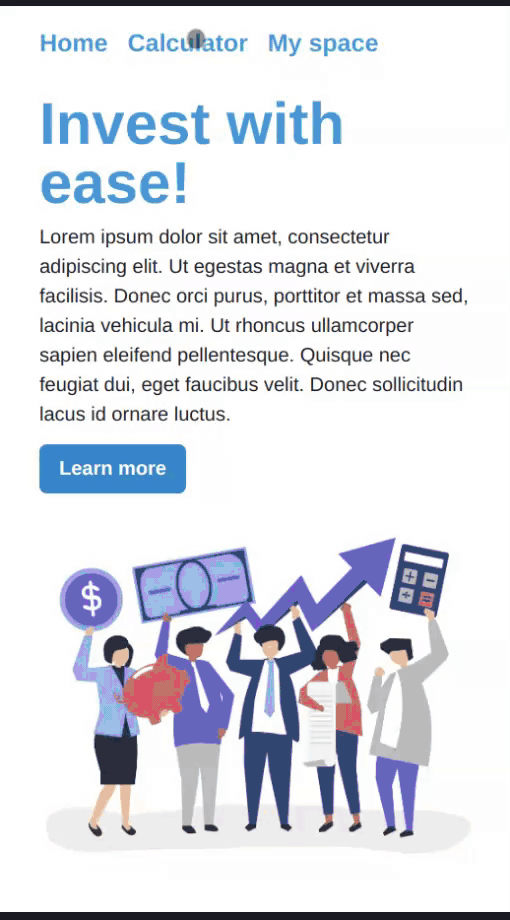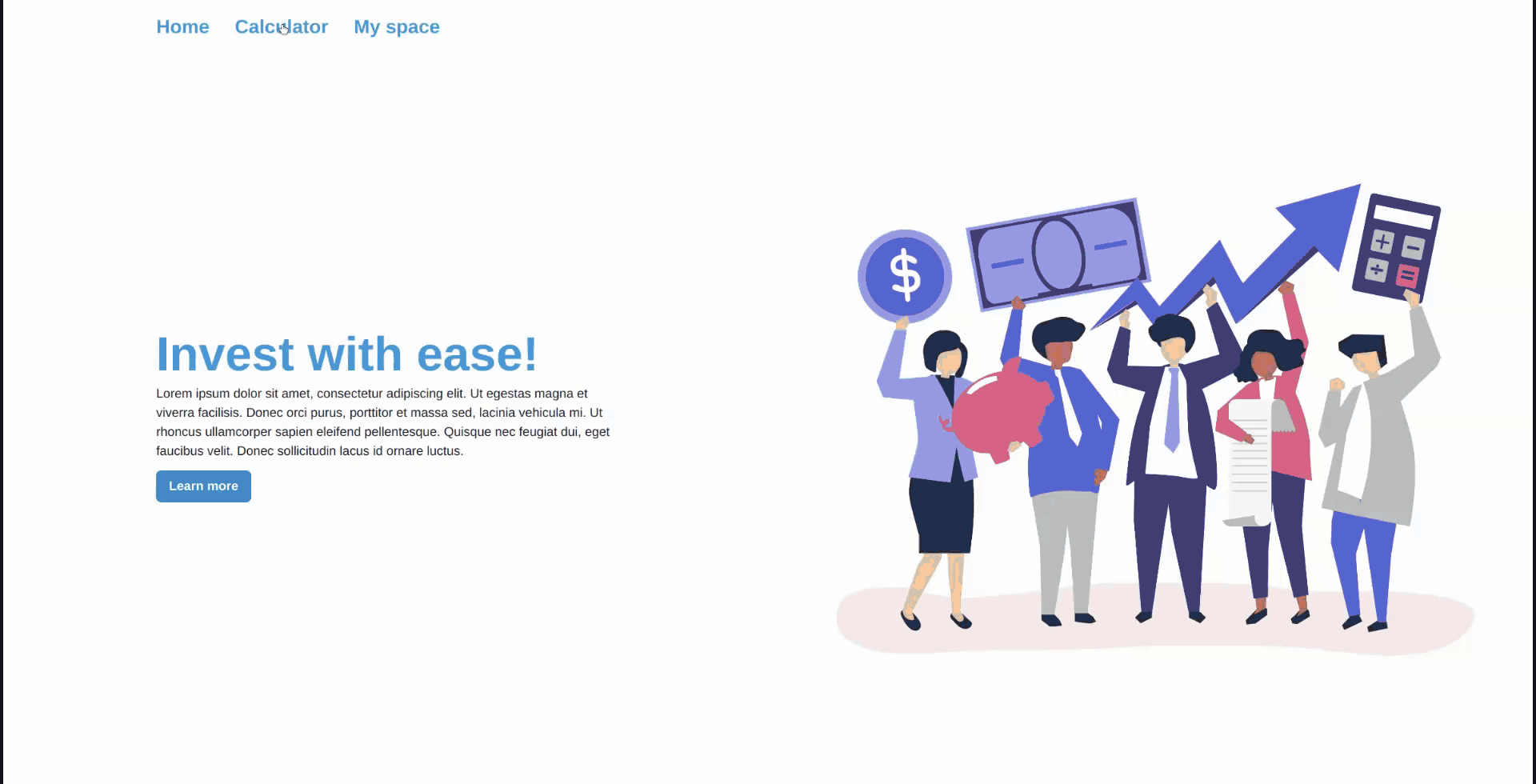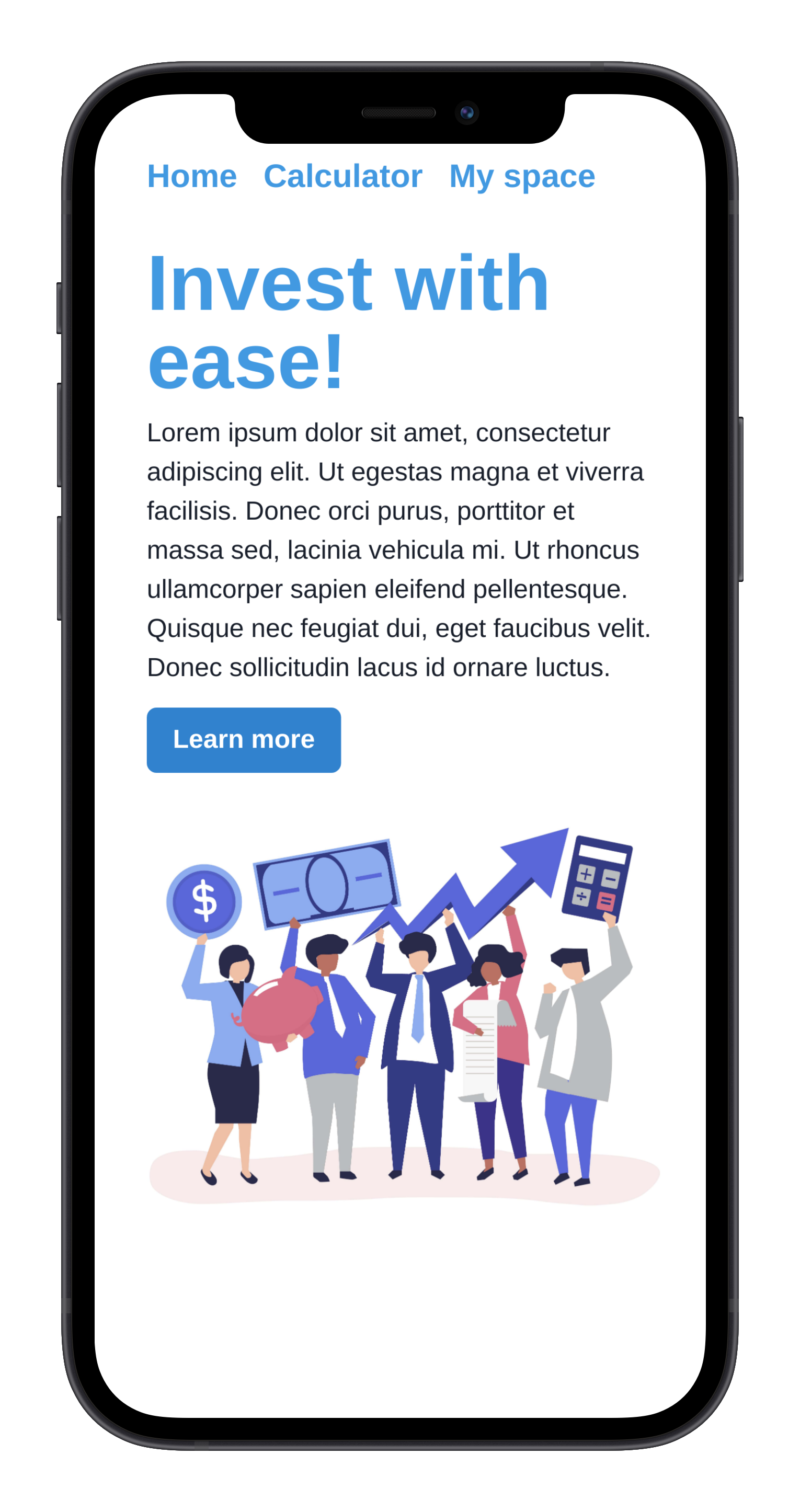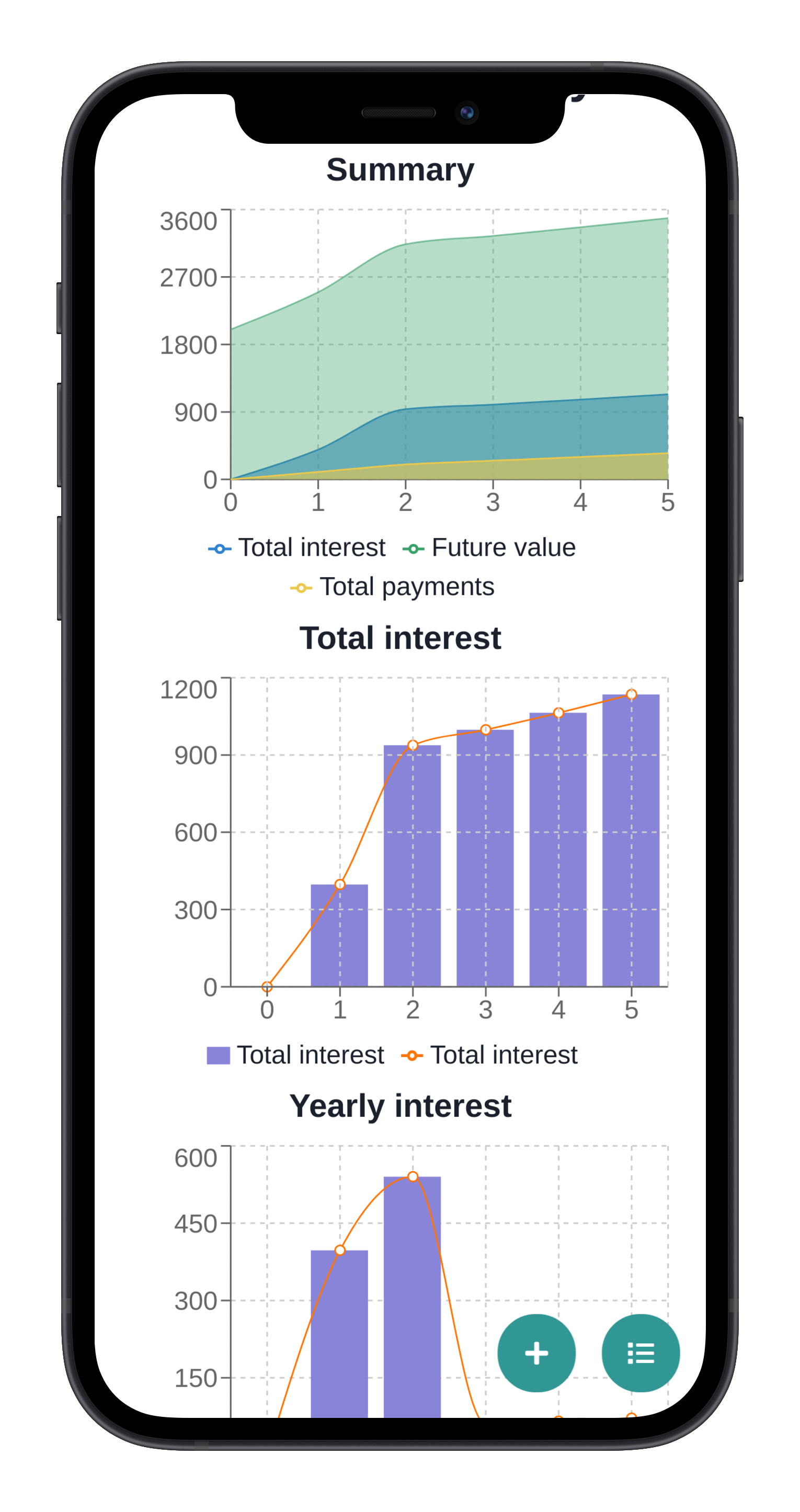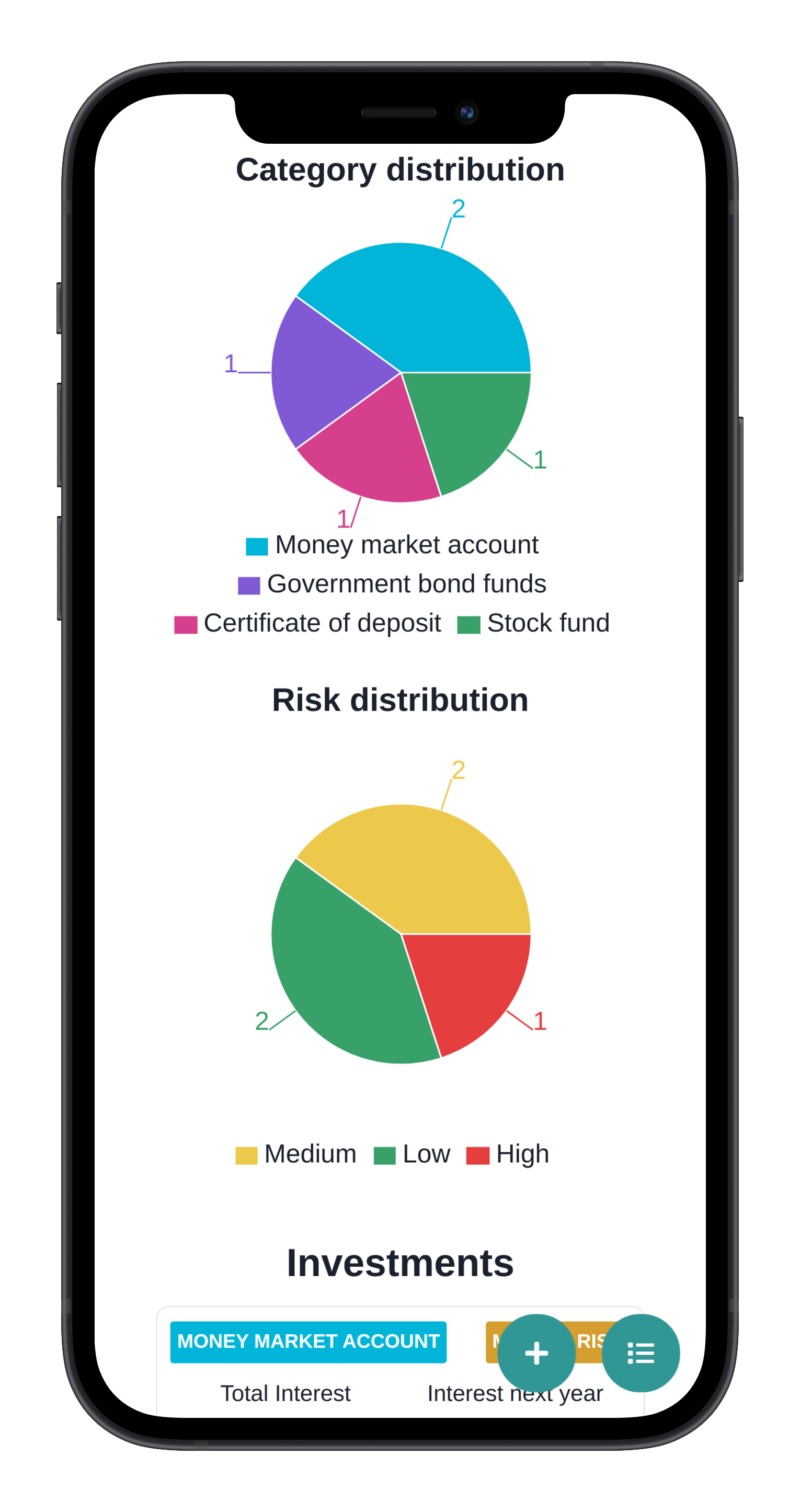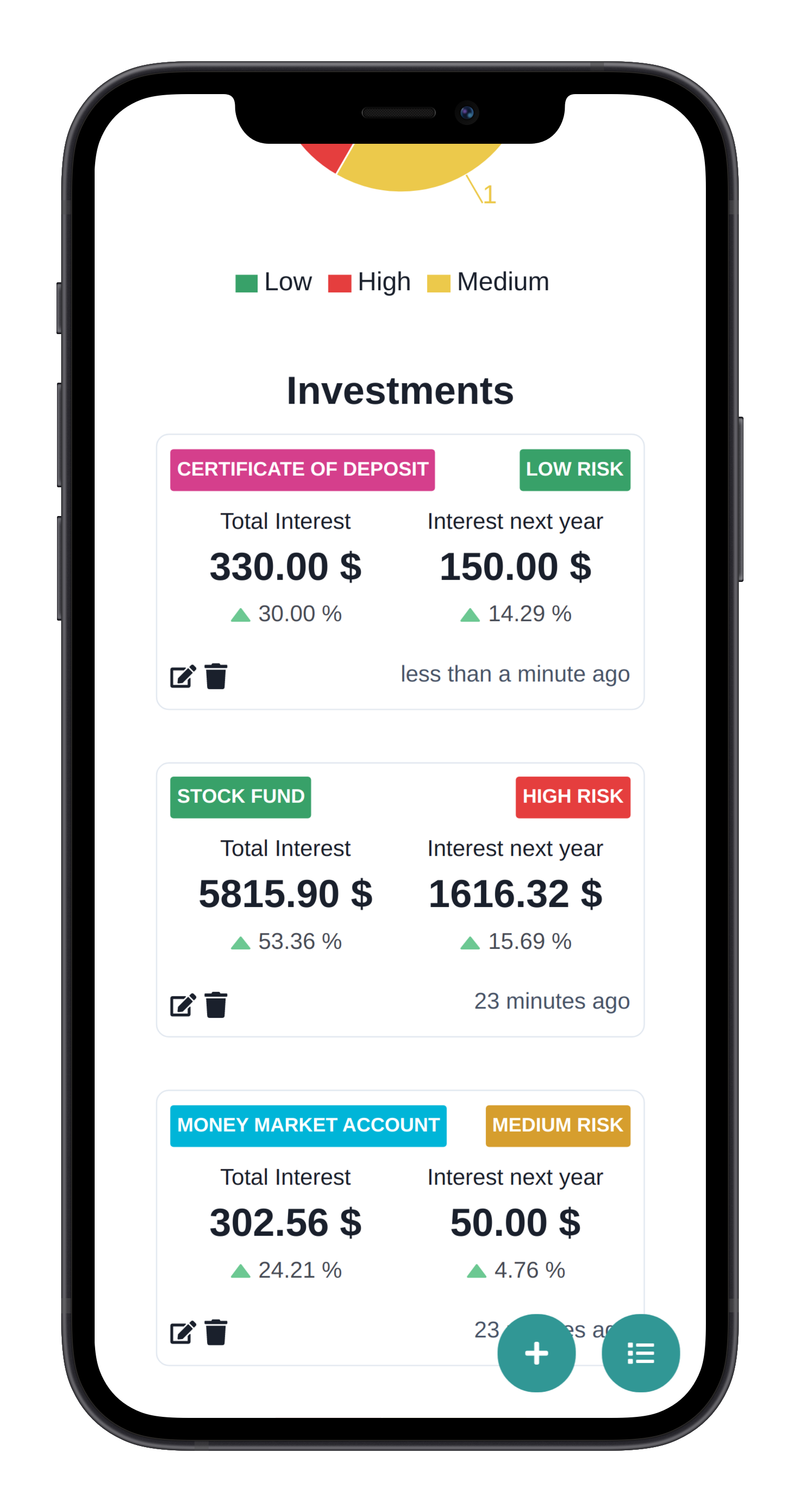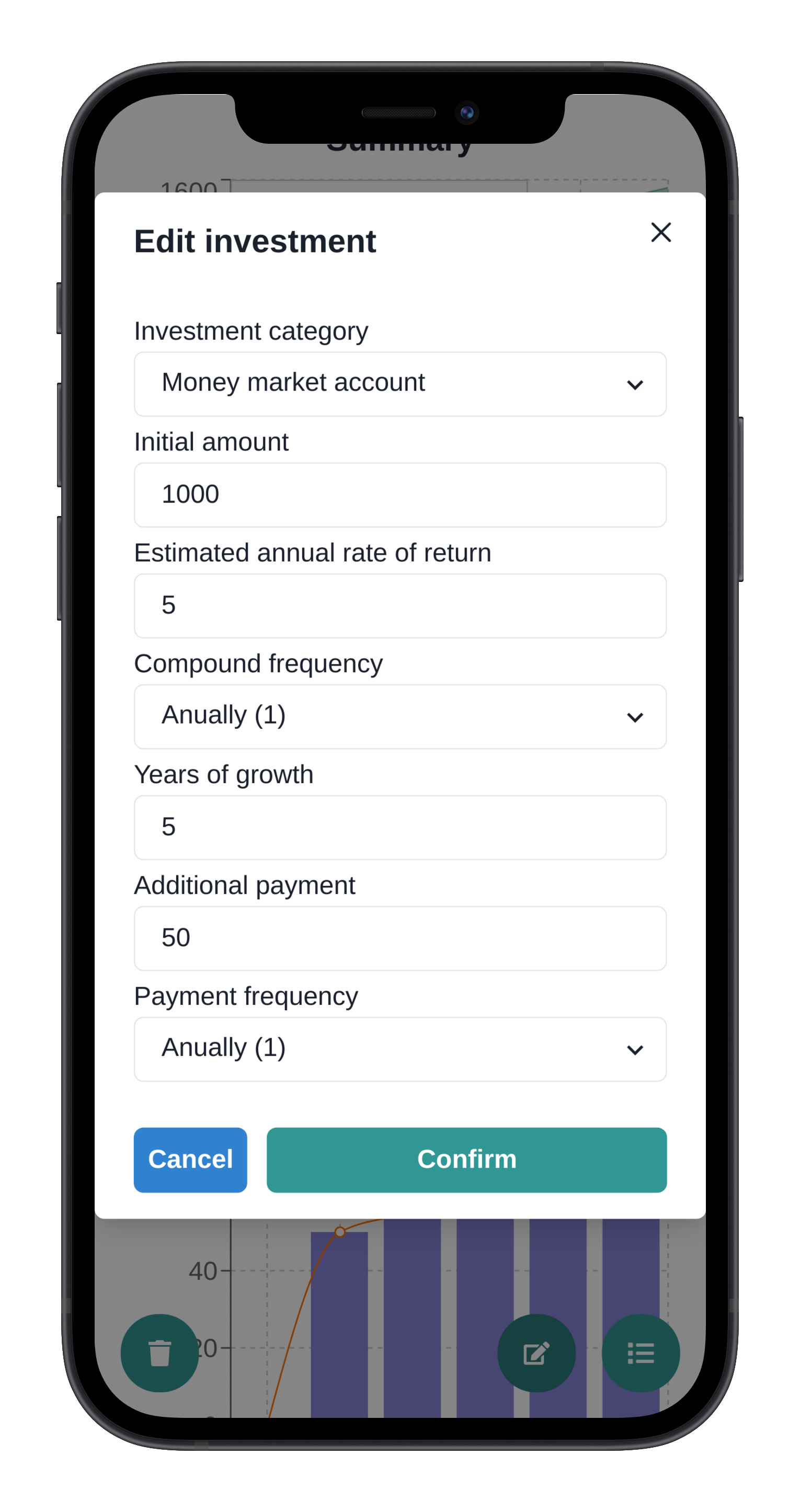Finance calculator with investment planning, interactive visualization and persistence.
- Description
- Features
- Presentation
- Architecture
- REST API specification
- Prerequisites
- Installation
- Tests
- License
Finance Calculator provides its users with robust and fault-tolerant investment planning tools. Upon visiting the website, the user can utilize our investment calculator to plan a real-time investment. The user can then decide to create an account to generate investment baskets - groups consisting of multiple assets. The application provides a full overview of the whole basket and gives much-needed insights. Interactive and responsive charts enhance user experience and provide intuitive visualization tools. Investment statistics are calculated based on economic compound interest formulas (the implementation was tested and compared against real data). Due to the confidential nature, the users cannot interact with investments and baskets that they do not own directly. The website follows a modern, fully responsive mobile-first design approach.
- Modular full-stack application
- Advanced interactive visualization
- Compound interest rate economic formulas implementation
- Performant and scalable persistence layer
- Authentication and authorization
- Fully responsive mobile-first design
- TypeScript
- React
- Chakra UI
- React Query
- React Router
- Recharts
- React Hook Form
- React Testing Library
- Jest
- MSW
- Java 11
- Spring (Web, Data, Security)
- Hibernate
- Groovy
- Spock
- PostgreSQL
- Flyway
- MapStruct
- Testcontainers
- REST-assured
- Springfox
- Maven
- Github Actions
- Codecov
- SonarCloud
Frontend architecture follows modern React trends. React context and React Query is used instead of the global state libraries such as Redux. Such a design decision reduces clutter and allows the application to be tested with mock REST API server making the tests more reliable and robust.
src
├── core (communication with backend)
├── pages (routes with page specific components)
└── shared (shared elements)
├── components (reusable components - used in more than one place)
├── constants (hard coded constants and translations)
├── context (react context providers and hooks)
├── models (classes that encapsulate business logic)
├── types (TypeScript types)
└── utils (reusable, pure functions)
Backend application follows a feature-first module structure. Due to the CRUDish nature of the project, database model representation is coupled with its REST API counterparts. Unstable factors like time are abstracted to make the code more testable.
root
├── core (configs, authentication and global error handlers)
├── common (reusable functionality)
└── feature modules
├── dto (data transfer objects)
├── exception (domain exceptions)
├── Entity (database entity - table)
├── Controller (communication layer)
├── Mapper (mappings between entity and dto)
├── Repository (data access layer)
└── Service (business logic)
Swagger API specification is available at http://localhost:8080/swagger-ui/. The server has to be up and running in for the documentation to be available
Install node, npm and yarn. You should be able to run the following commands.
node --version
npm --version
yarn --versionYou should be able to run the following commands.
java --version
mvn --versionInstall docker and docker-compose. You should be able to run the following commands.
docker --version
docker-compose --versionRun the following commands before proceeding to the sections below.
cd docker
docker-compose up -dcd frontend
yarn install
yarn run startcd backend
mvn spring-boot:runIn order to manually run tests, follow the instructions below.
yarn run testmvn verifyThis project is licensed under the MIT License - see the LICENSE.md file for details.

